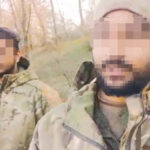Interviewing terrorists, guerrilla fighters, and revolutionaries was seen as a part of any credible journalist’s repertoire; this changed after 9/11
In 1997, four years before the 9/11 attacks in the U.S., journalists from CNN interviewed Osama bin Laden in a cave in a remote mountain in Afghanistan. When they asked the al-Qaeda chief, once an ally of the U.S.- and Pakistan-trained mujahideen in Afghanistan who fought against Soviet troops, about his future plans, bin Laden replied, “You’ll see them and hear about them in the media, God willing.” Back then, he was wanted for terror attacks in Africa and Saudi Arabia. When the 9/11 attacks took place in 2001, the journalists, Peter Bergen and Peter Arnett, were in great demand for their insights into the man who could have masterminded attacks that left thousands dead. Both men went on to write bestsellers on that encounter.
At the time, interviewing terrorists, guerrilla fighters, and revolutionaries was seen as a part of any credible journalist’s repertoire. At the beginning of the LTTE’s violent attacks in Sri Lanka in 1983, TIME magazine’s Anita Pratap interviewed Velupillai Prabhakaran. In 2002, more than 10 years after he masterminded the assassination of former Indian Prime Minister Rajiv Gandhi, and several other Sri Lankan leaders, Prabhakaran decided to hold a press conference in the deep forests of Kilinochchi. Three hundred journalists from around the world flew to Sri Lanka to attend it.
I remember travelling to remote parts of Jammu and Kashmir in 1995, where Pakistan-backed separatist groups were being trained in camps. These local groups were responsible for killing hundreds of people, including Kashmiri Pandits, forcing the Pandit community to flee the Valley. It was imperative to contextualise their words and fact-check their claims, speak to officials from the government and the military who countered their narrative, as well as bring in the victims’ stories; no one suggested that we should not speak to the militants. On the other hand, journalists were seen as adding an extra perspective to these conflicts through such interviews. In some cases, they even played the role of intermediaries.
However, the new age of terrorism post-9/11 changed that understanding. The kidnapping and brutal murder of American journalist Daniel Pearl in 2002 by al-Qaeda, and the horrific killings of American journalists James Foley and Steven Sotloff in 2014 by the Islamic State, became lessons that journalists were no longer seen as important for getting the word for groups with a political cause. They were now an easy target, and graphic videos of their killings made for the sensational headlines that transnational terror groups wish to grab. For governments too, there was less desire to engage with such groups and globally, counter-terror strategies aimed at the elimination of all violent groups inimical to the various states they operated in.
On some groups, there is consensus, as they are designated as terrorist by the UNSC, but given that there is no global agreement on how to define terrorism, many countries come up with their own lists with the understanding that journalists no longer engage with such groups. Governments, too, change their positions, making the question of whether to interview or not more complex: while Taliban leaders today are regularly interviewed by the Indian media, and Indian diplomats publicly engage them, they are still designated terrorists, wanted by India particularly for attacks that killed Indian personnel.
In the absence of any legal code, journalists are left to take their own editorial calls, a fact that UNESCO accepted in a 2017 document called ‘Terrorism and the Media: A Handbook for Journalists’. The organisation said that while it is important to retain control of the narrative and not offer a platform to any terrorist, “ultimately, the choice mainly depends on each media’s editorial policy and idea of journalistic independence and responsibility”. This week, The Hindu Group’s magazine Frontline came under attack for publishing an interview with a Hamas leader based in Doha. It is important to note that neither the UNSC nor India has as yet put Hamas on their lists of designated terrorists, although the External Affairs Ministry has said that it considers Hamas’s killing of 1,405 Israelis in the October 7 attacks as “terrorist acts”.
To interview, or not to interview
Interviewing terrorists, guerrilla fighters, and revolutionaries was seen as a part of any credible journalist’s repertoire; this changed after 9/11
In 1997, four years before the 9/11 attacks in the U.S., journalists from CNN interviewed Osama bin Laden in a cave in a remote mountain in Afghanistan. When they asked the al-Qaeda chief, once an ally of the U.S.- and Pakistan-trained mujahideen in Afghanistan who fought against Soviet troops, about his future plans, bin Laden replied, “You’ll see them and hear about them in the media, God willing.” Back then, he was wanted for terror attacks in Africa and Saudi Arabia. When the 9/11 attacks took place in 2001, the journalists, Peter Bergen and Peter Arnett, were in great demand for their insights into the man who could have masterminded attacks that left thousands dead. Both men went on to write bestsellers on that encounter.
At the time, interviewing terrorists, guerrilla fighters, and revolutionaries was seen as a part of any credible journalist’s repertoire. At the beginning of the LTTE’s violent attacks in Sri Lanka in 1983, TIME magazine’s Anita Pratap interviewed Velupillai Prabhakaran. In 2002, more than 10 years after he masterminded the assassination of former Indian Prime Minister Rajiv Gandhi, and several other Sri Lankan leaders, Prabhakaran decided to hold a press conference in the deep forests of Kilinochchi. Three hundred journalists from around the world flew to Sri Lanka to attend it.
I remember travelling to remote parts of Jammu and Kashmir in 1995, where Pakistan-backed separatist groups were being trained in camps. These local groups were responsible for killing hundreds of people, including Kashmiri Pandits, forcing the Pandit community to flee the Valley. It was imperative to contextualise their words and fact-check their claims, speak to officials from the government and the military who countered their narrative, as well as bring in the victims’ stories; no one suggested that we should not speak to the militants. On the other hand, journalists were seen as adding an extra perspective to these conflicts through such interviews. In some cases, they even played the role of intermediaries.
However, the new age of terrorism post-9/11 changed that understanding. The kidnapping and brutal murder of American journalist Daniel Pearl in 2002 by al-Qaeda, and the horrific killings of American journalists James Foley and Steven Sotloff in 2014 by the Islamic State, became lessons that journalists were no longer seen as important for getting the word for groups with a political cause. They were now an easy target, and graphic videos of their killings made for the sensational headlines that transnational terror groups wish to grab. For governments too, there was less desire to engage with such groups and globally, counter-terror strategies aimed at the elimination of all violent groups inimical to the various states they operated in.
On some groups, there is consensus, as they are designated as terrorist by the UNSC, but given that there is no global agreement on how to define terrorism, many countries come up with their own lists with the understanding that journalists no longer engage with such groups. Governments, too, change their positions, making the question of whether to interview or not more complex: while Taliban leaders today are regularly interviewed by the Indian media, and Indian diplomats publicly engage them, they are still designated terrorists, wanted by India particularly for attacks that killed Indian personnel.
In the absence of any legal code, journalists are left to take their own editorial calls, a fact that UNESCO accepted in a 2017 document called ‘Terrorism and the Media: A Handbook for Journalists’. The organisation said that while it is important to retain control of the narrative and not offer a platform to any terrorist, “ultimately, the choice mainly depends on each media’s editorial policy and idea of journalistic independence and responsibility”. This week, The Hindu Group’s magazine Frontline came under attack for publishing an interview with a Hamas leader based in Doha. It is important to note that neither the UNSC nor India has as yet put Hamas on their lists of designated terrorists, although the External Affairs Ministry has said that it considers Hamas’s killing of 1,405 Israelis in the October 7 attacks as “terrorist acts”.






NO COMMENT